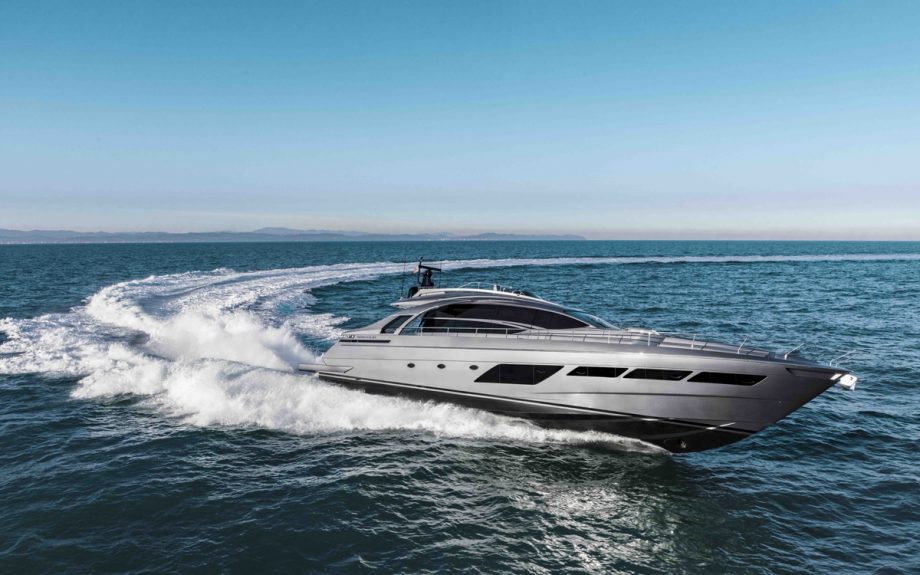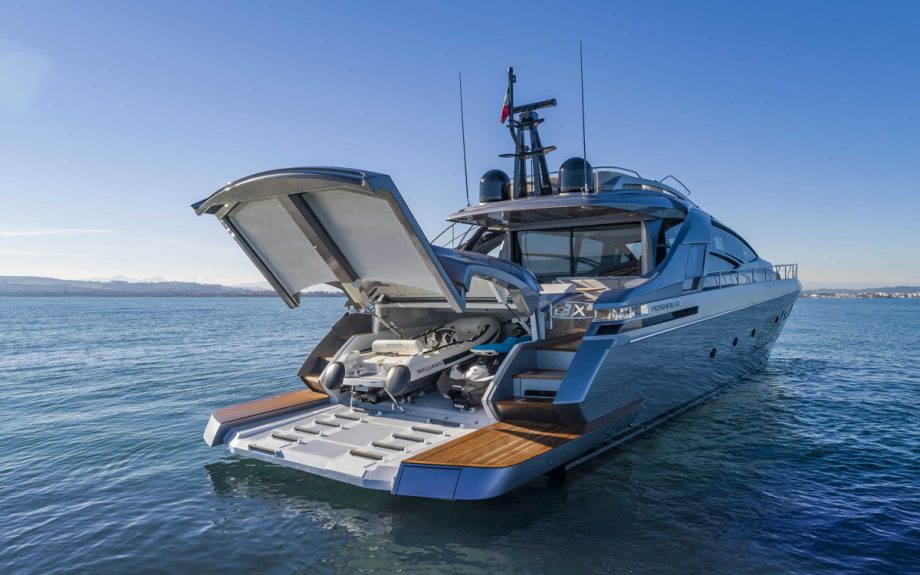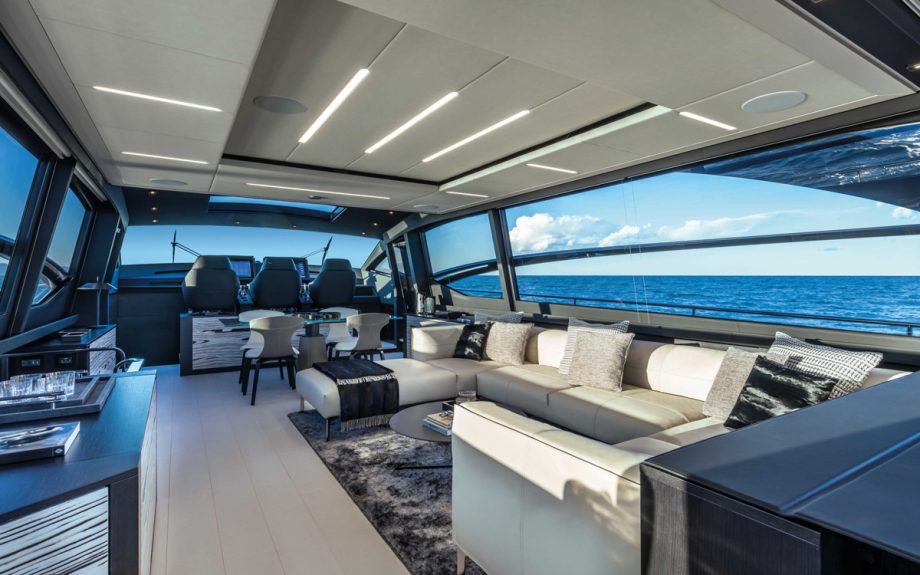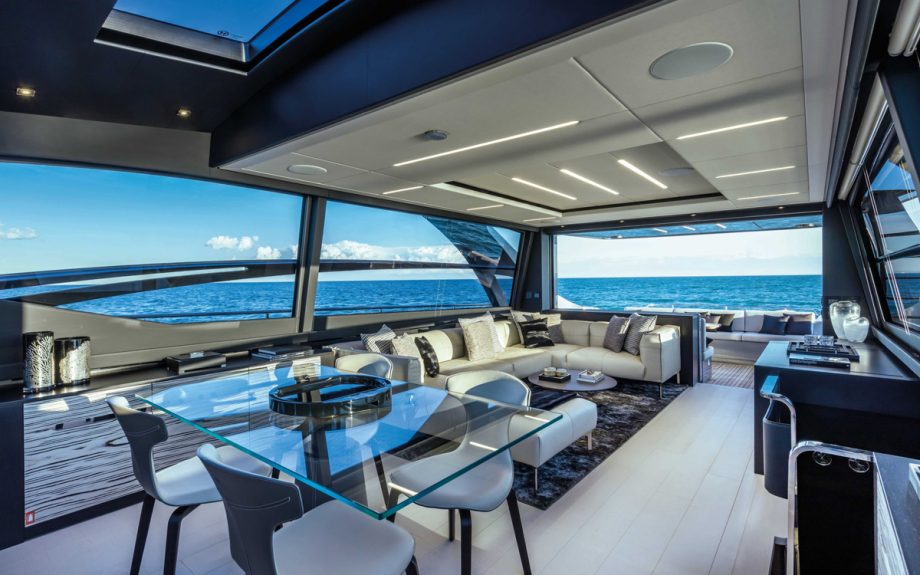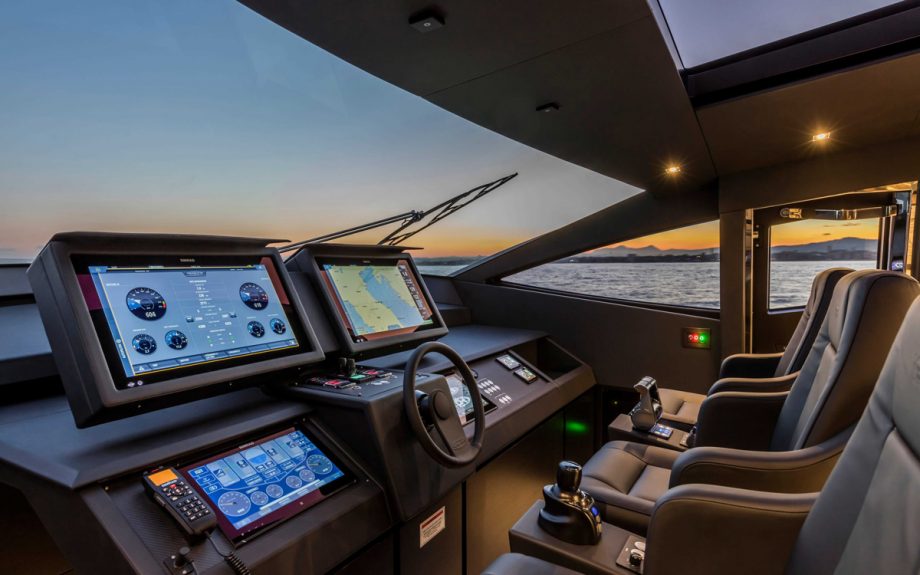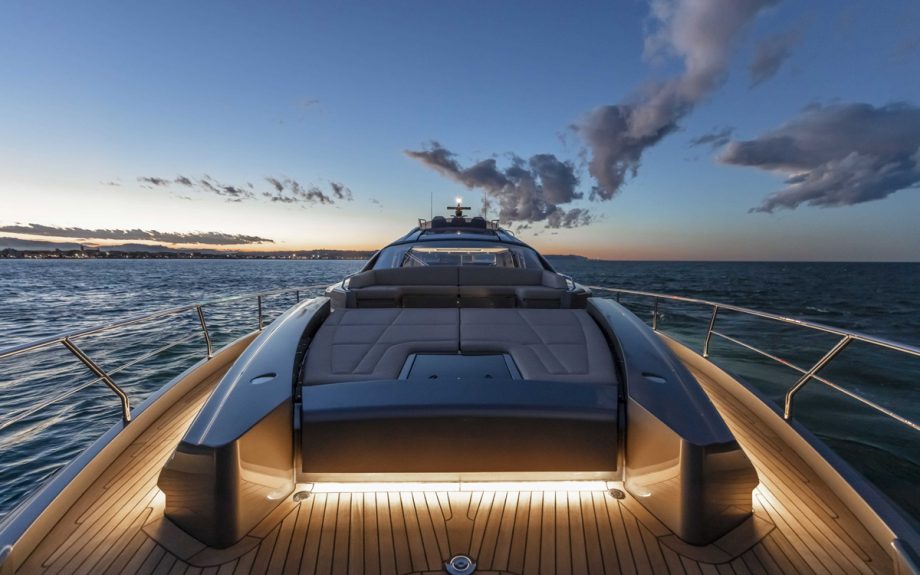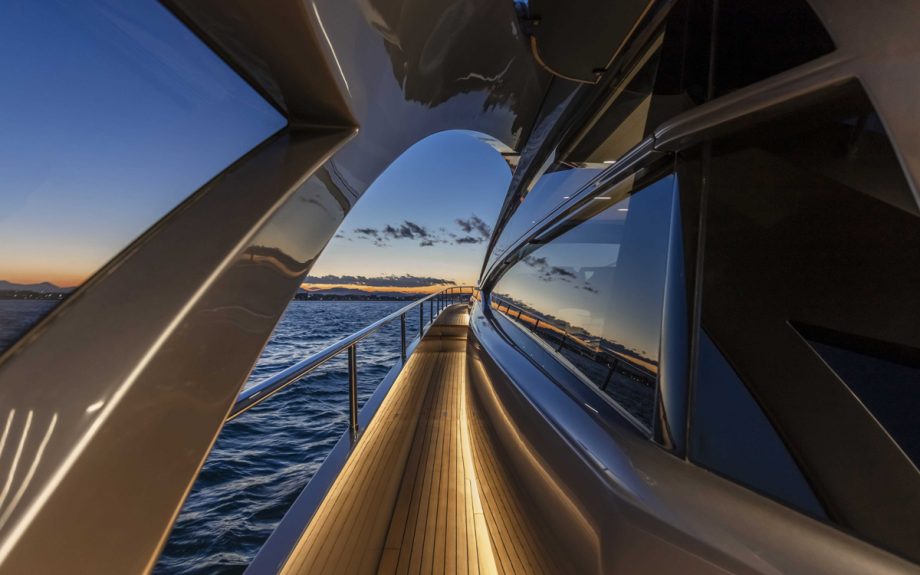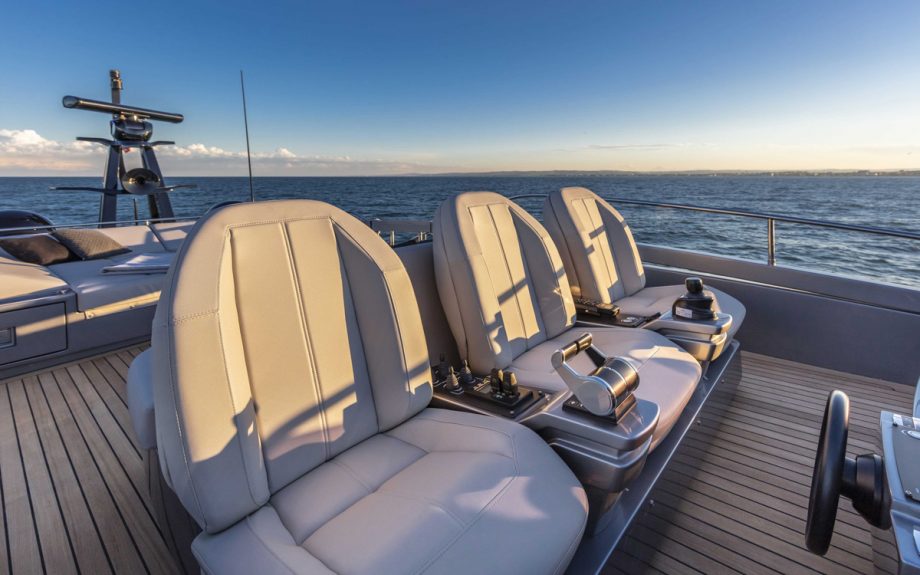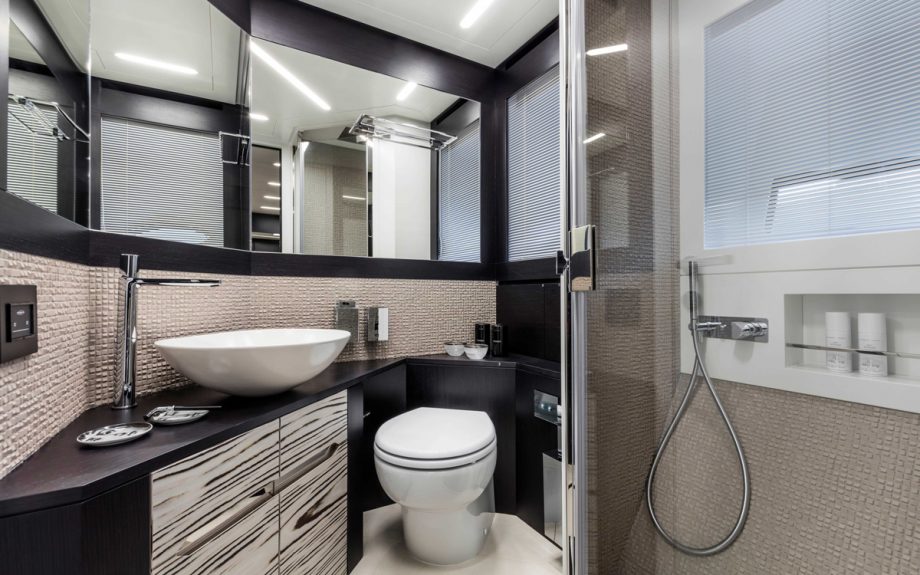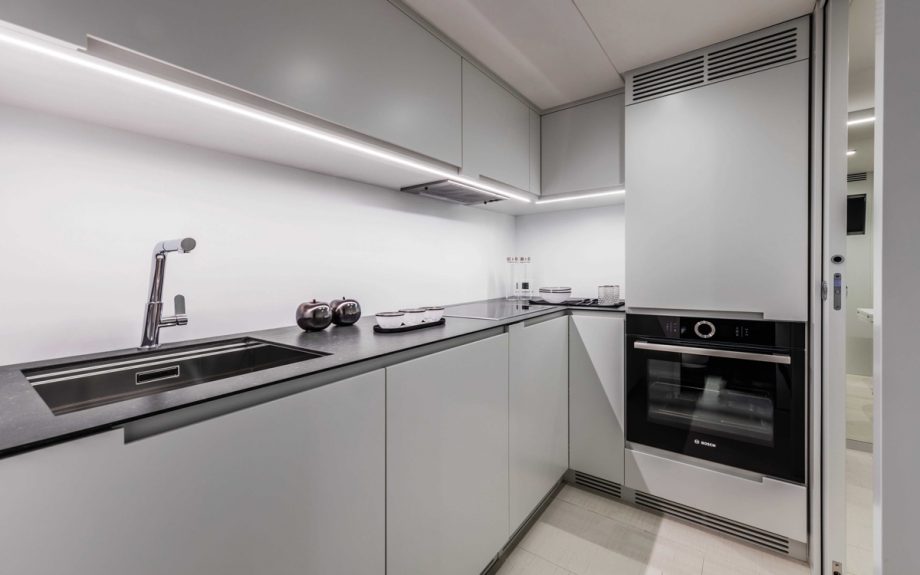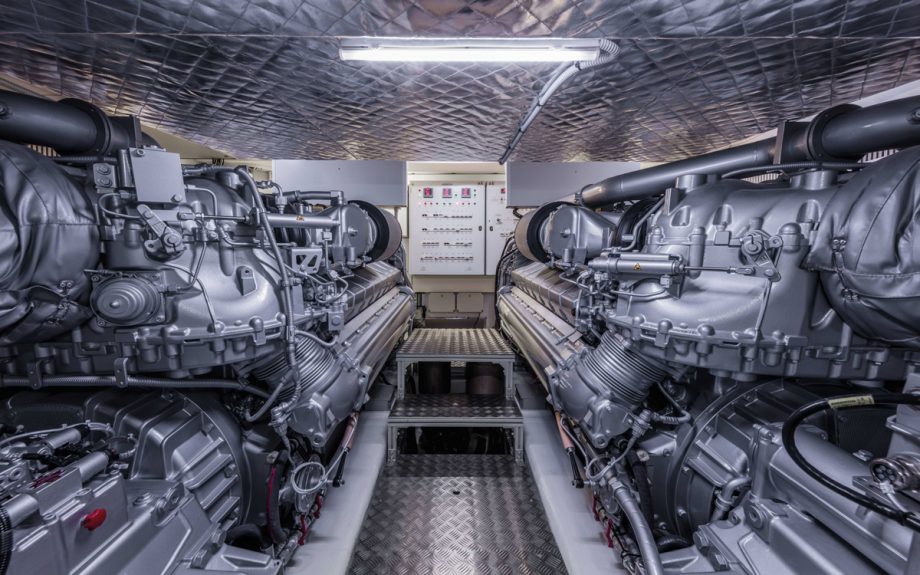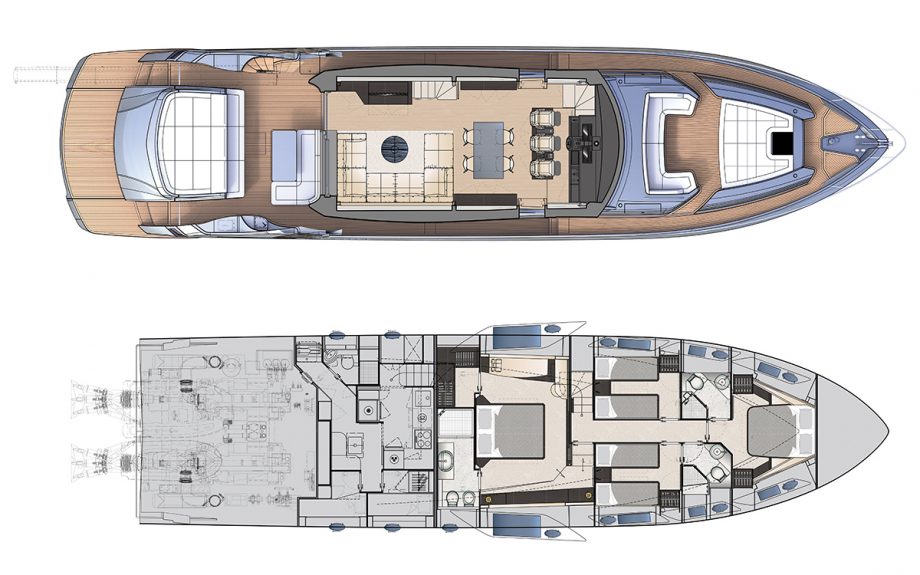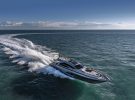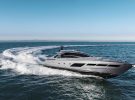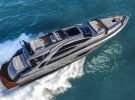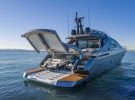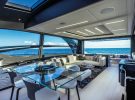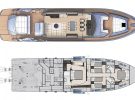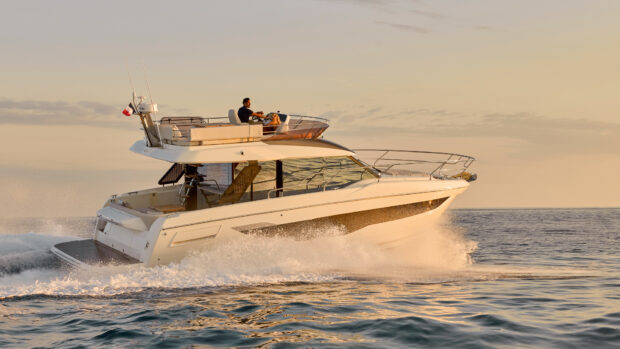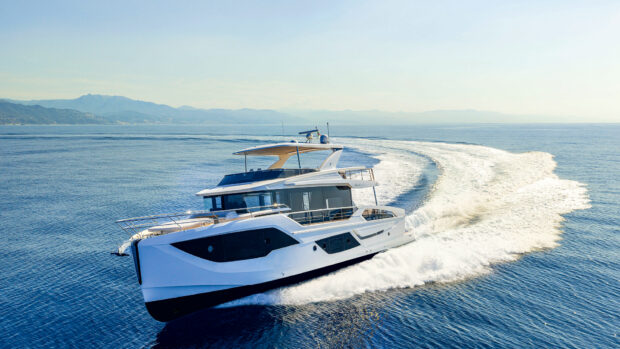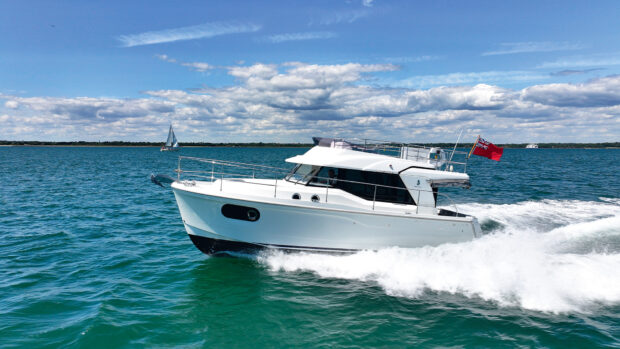Luxury and engine power both demand acres of space, but performance boats need to be slender. Can Pershing’s latest creation pull off the ultimate spatial compromise?
The proof of the Pershing is in the handling. Few shipyards set quite so much store in their boats’ ability to corner with the kind of competence that raises the hairs on the back of your neck.
The trouble is, reputations can be lost as well as gained: just one new model whose talents are judged to be less than sparkling can undo all the respect so hard-won by its predecessors.
Pershing is not unique in this, of course. But it is unique in its efforts to yoke together high-tech sportsboat speed and handling with high-end Italian luxury. And it’s a task that is not getting any easier.

Deep-vee hull still delivers high cornering speeds and dramatic angles of lean
In its new Pershing 8X, the Ancona shipyard has faced up to the classic quandary that has exercised every yacht designer who has ever tried to get to grips with the problem of how to make a fast yacht luxurious – and vice versa.
Luxury means comfort, and comfort requires space. Performance means power, and power – big engines, big tanks – needs space too. But you can’t just make a hull that’s voluminous enough to accommodate all these conflicting demands, because performance hulls have to be slender, and high-volume hulls don’t handle.
Or so they say – it seems that Pershing’s designers now beg to differ. The Pershing 82, which this new model seems destined to replace in the product range, was 18ft 1in (5.50m) in the beam. The 8X is a couple of feet longer but a full 14in wider, at 19ft 3in (5.86m).
Article continues below…

Pershing 9X test
The Pershing 9X may be as fast and fabulous as ever but it now has the polished manners to match

Pershing 7X yacht tour: This $3.2m sportscruiser can do 50 knots flat-out
That’s the sort of length-beam ratio you would expect to find in a family flybridge cruiser – except the Pershing 8X packs 5,276hp in its engineroom and has a pair of Top System surface drives sticking out at the back. This is not normal.
Size matters
The idea, of course, is to make the accommodation areas larger and more luxurious. The extra width is used to good effect on the main deck, where the saloon feels nice and wide even without compromising the side decks, as happened on the Pershing 82.
Perhaps the most spectacular improvement, however, is the cunningly concealed flybridge companionway inside that curved carbon coaming on the port side. The 82’s arrangement – a set of folding steps that dropped down from the deckhead – was less alliterative as well as less convenient.

The 8X’s extra beam is apparent from the spacious cockpit and sidedecks. Note how the glass saloon doors drop into the deck
Down below, the obvious place to look for extra width is in the gaps between the berths in the twin guest cabins. The berths themselves are also wider, as well as longer, and it’s the same story in the VIP and master suites. Headroom has been raised too.
The improved master suite layout in the Pershing 8X, making proper use of the visual qualities of an open, full-beam cabin, adds significantly to the sense of space on the lower deck. Like its predecessor, the 8X is available with a choice of one or two twin-berth guest cabins.
Significant extra width has the potential to create significant extra weight, which was obviously not an option in this case: the Pershing 8X simply had to perform at least as well as the 82, and there was no more horsepower available in the MTU 2000 series footprint.

Twin 2,638hp MTU engines feed their power through automated surface drives
So the superstructure is made entirely of lightweight carbon fibre, the mouldings are created from vacuum-infused epoxy resin instead of vinylester, and although a substantially bigger boat it comes out just 700kg heavier.
The hull form is a constant-deadrise, 20° deep-V – similar to the 82’s, with most of the extra beam going into wide chine flats that fill out amidships and carry on aft. So, in theory at least, the Pershing 8X will have the incisive seakeeping of a capable offshore boat, ironing out the chop, while extra lift from the broad chines should help with straight-line speed at the expense, perhaps, of cornering precision.
We put theory into practice on a balmy spring day off Fano, on the Italian Adriatic coast not far from Pershing’s Ancona shipyard. The new-generation 8X is loaded with electronic aids.

Compact flybridge sits in a recess to lower its visual impact
Surface-drive boats are often a handful for the helmsman – the racing boats for which they were originally designed had a two-person crew – and modern technology can ease the workload for leisure users, ensuring that drive trim is optimised for best speed and fuel consumption.
For the 8X, Pershing has worked with Xenta and Top System to produce a single-control interface that allows for joystick control at speeds up to 42 knots, automatic trim for the flaps and drive legs, and an automatic autopilot system that holds the heading without the need to engage the boat’s actual autopilot.
It works extremely well. So does the new hull shape. Pershing’s engineers explained that the extra lift from the chines helps not just with top speed, but also at transitional speeds between displacement and planing.

This phase of performance can be rather vague on surface-drive boats: a slight change in hull attitude or leg trim making a disproportionate contribution to boat speed, as the drives rise into thinner water, the props spin more quickly, and engine revs increase. You need to have your wits about you.
Plane sailing
On the Pershing 8X, this acceleration phase felt more predictable, although admittedly our speed still more than doubled between 1,500 and 2,000rpm. One tangible benefit of the extra lift is in low-speed planing. The boat was quite happy at 25 knots and 1,600rpm, although you won’t find that sweet spot going up the rev range. You have to decelerate to get there. All surface-drive boats have their idiosyncrasies.
With 400 more horsepower than its predecessor, slightly more weight and a lot more dynamic lift, our test 8X clocked an impressive two-way average of 48.3 knots in our sea trial – nearly two knots better than the similarly-loaded Pershing 82 we tested in 2012.

Long overhang and tall coamings makes for a well-protected cockpit
On a calm sea it was difficult to judge the quality of its seakeeping, but there were some firmer than expected impacts as we charged through our own wake at high speeds, which were probably down to those broad chines.
When it came to the boat’s driving experience, the 8X can certainly provide the superbly dramatic angles of heel in hard turns that Pershing aficionados love so much, when you have to look through the sunroof to see where you’re going.
It didn’t, perhaps, display quite the same razor-sharp tracking that has made these boats a byword for brilliant handling – but if you weren’t looking for flaws I doubt whether you’d notice any. This boat is powerful, fast and huge fun to drive.
Price as reviewed:
£5,380,000.00 inc. VAT
Verdict
It goes. It handles. And in spite of its unusually wide beam, and its uncharacteristically generous internal volume, it still feels like a proper Pershing where it counts – out at sea. With the 8X, the shipyard’s reputation is safe.
Details
LOA: 83ft 10in (25.55m)
LWL: 64ft 4in (19.60m)
Beam: 19ft 3in (5.86m)
Draught: 4ft 7in (1.40m)
Fuel capacity: 1,364 gal (6,200 litres)
Water capacity: 286 gal (1,300 litres)
Displacement (light): 57 tonnes (125,663lbs)
Top speed on test: 48.3 knots
Cruising speed: 35-45 knots
Design: Fulvio de Simoni/Ferretti Group Engineering




